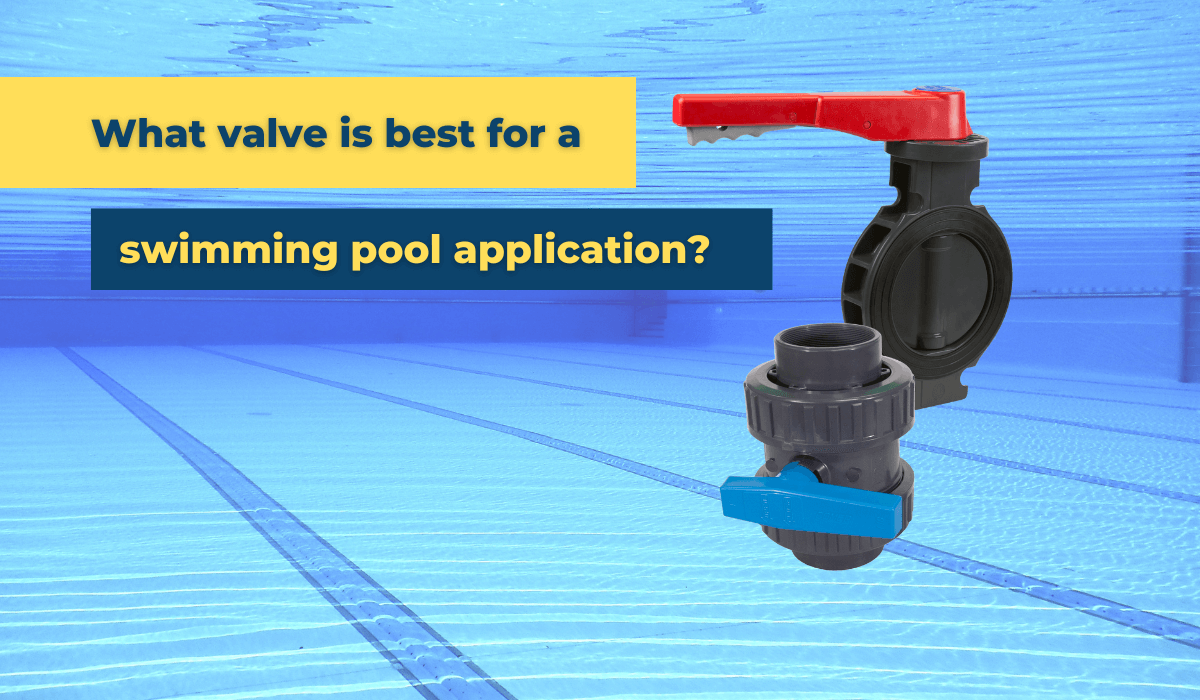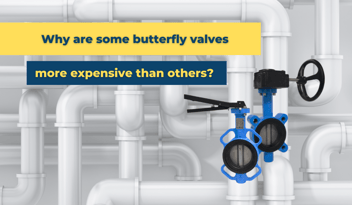Best valves for swimming pool systems
Swimming pools are a common feature in many homes and communities, providing a place for recreation, fitness, and relaxation. As such, ensuring the proper functioning of these pools is of the utmost importance to keep them safe, clean, and usable. One of the most vital components of a pool’s plumbing system, and therefore its continued operation, are the valve systems, which control the flow of water in and out of the pool.
At Waterworks, customers often ask us what type of valve is best suited to a swimming pool application. In this article, we break down the following factors so you can find the right valve for your swimming pool system:
The basics of swimming pool systems
The primary function of a pool plumbing system is to effectively transport and manage the flow of large volumes of water and ensure safety for those using it.
Valves are used to control the direction of the flow, both to and from the pool, and in and out of any equipment. The pump, filter, and heater are positioned between the suction pipes and the return pipes.
1. Suction side
This system draws the water into the circulatory system. Key features include suction lines, main drains, valves, and skimmers, which are small openings built on the poolside.
2. Filter system
The filtration system is designed to process and clean the water pulled in from the suction side. Key components are a pre-filter, pump, filter, valves, chlorinator, and heater if you have one.
3. Return side
The return system pushes the processed water back into the pool to maintain a consistent water level. Key features are return lines, valves, and jets.
Types of valves for swimming pools
Valves are mechanical components that regulate the direction of flow in a swimming pool plumbing system. These valves direct water flow from the swimming pool to the filter and heater, and then back to the swimming pool.
There are several types of valves available for swimming pool applications, including:
Ball valves
Ball valves are used to stop the flow of liquids in a system that is not in use or during equipment servicing. PVC ball valves can have two types of connections – either threaded or solvent-welded joints. The two configurations include having one unified piece or having union ends known as double-union ball valves, which make it easy to disconnect for maintenance later on. Ball valves are easy to operate and low maintenance, making them a popular choice for many pool applications.
Gate valves
Gate valves are used to shut off the flow when a system is not in use, to prevent syphoning, or when equipment is removed for servicing. There are two possible configurations. The first is a threaded spindle that slowly lifts the valve's inner gate to let water through. The second is known as a slide gate valve or knife valve where an internal shaft slides up and down to open and close.
Butterfly valves
Butterfly valves are used to isolate a pipeline and regulate fluid flow. Inside the valve, a circular disc rotates within the pipe to open and close as required. They are suitable for larger pipe sizes such as commercial pool circulation systems.
Check valves
Check valves are often used to prevent backflow because they close when the flow stops or moves in a reverse direction, and open when flowing in the direction indicated on the valve. Typically, there are two configurations:
Swing check valves
Swing check valves use gravity or back pressure to close the swinging plate against the valve seat. They are effective in pipelines with either a horizontal or vertical flow direction, where gravity will cause the swing plate to close.
Spring check valves
The spring check valve has spring assistance to close and can be installed in pipelines with any flow direction.
Ball check valves
Ball check valves also use gravity or back pressure to force a ball located inside the valve back into the valve seat. When the flow starts again the ball is moved off the valve seat and the water can flow around the ball. They are ideally suited for pipelines with a vertical flow direction.
Common swimming pool valve materials
The materials used to manufacture your valves will determine their longevity, functionality, and maintenance requirements. In swimming pool systems, valves are most commonly made of either PVC or Cast Iron.
PVC valves
Polyvinyl chloride (PVC) is a type of plastic used for its durability, chemical resistance, and affordability. One of its primary advantages is its high resistance to corrosion and chemicals like chlorine, making it a popular choice for domestic and commercial swimming pools.
PVC is also known for its long-lasting properties and relatively low cost, which makes it a cost-effective solution. However, PVC can become brittle when exposed to high levels of UV light, often leading to cracks and breakages over time. Key features include:
-
Durable
-
Low maintenance
-
Lightweight
-
High chemical resistance
Cast iron valves
Cast iron butterfly valves are typically a more cost-effective choice, especially for large commercial pools. Cast iron valves feature a stainless-steel disc and rubber material liner as the primary water interface as it flows through. The outer body of these valves can corrode in wet environments so it is crucial to keep them dry and far away from chlorine dosing units.
-
Low cost
-
Durable
-
Prone to corrosion
-
Heavy and brittle
-
Low chemical resistance
Conclusion
When selecting a valve for your swimming pool system, keep performance, longevity, and safety in mind. To make an informed decision, we suggest considering each of the following factors:
-
Type of pool
-
Pool water properties
-
Longevity and durability
-
Corrosion resistance
-
Operating temperature
-
Connection type
-
Pressure rating
Ultimately, the best valve for your pool depends on the specific needs and requirements of your pool system. For more expert advice and product recommendations for your pool, contact our friendly team today. We’ll share our industry knowledge to help you find the most suitable solutions for your application.





.png?width=352&name=WW%20best%20valve%20for%20wastewater%20and%20effluent%20(1).png)